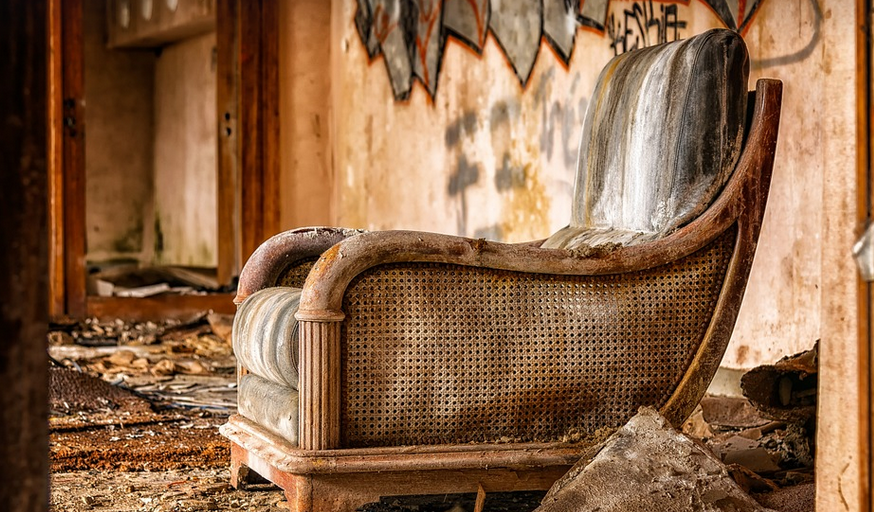The Silent Invasion: Understanding the Signs of Bugs in Wood Furniture
Imagine this: you’re admiring your beautiful antique dresser, its warm wood surface gleaming under the light. But then you notice a tiny speck on the edge of a panel – or worse, a telltale trail leading to a darker, more unsettling sight. You might be facing an unwelcome invasion of insects, and it’s time to take action!
While wooden furniture adds warmth, charm, and character to our homes, some unwanted guests can wreak havoc. These tiny infiltrators may not always be obvious at first, but their presence can leave lasting damage on your beloved pieces.
Identifying the Culprits: Common Wood-Eating Bugs
Before we dive into the signs of a bug infestation, it’s important to know who might be behind those tiny trails. Certain insects commonly target wood furniture, seeking sustenance and shelter for their offspring. Here are some common culprits:
1. Woodworm: The Classic Culprit
Woodworm, also known as carpenter ants, is a familiar foe of wood furniture. Their distinctive larvae tunnel through the softwood of your furniture, leaving behind tiny holes or galleries that can compromise its structural integrity.
2. Book Louse: A Tiny but Devastating Threat
Book lice are tiny, wingless insects that feed on dead and decaying wood fibers. They often infest books and other materials, but their presence in furniture can cause a decline in the quality of the wood’s surface.
3. Powderpost Beetles: A Silent Enemy Hiding In Plain Sight
Powderpost beetles are another infamous wood-eating insect that hides within the wood itself. Their larvae burrow deep into the wood, leaving behind a network of tunnels and galleries, resulting in a weakening of the wood’s structure.
4. Draw-in Pests: The Subtle Foe
Draw-in pests are not always insects but can include rodents or spiders that find their way to furniture seeking shelter. These creatures can cause damage by gnawing on wood panels, creating holes and cracks, and even introducing unwelcome pests into your home.
Decoding the Signs: Recognizing the Early Warning Signals
Now that you’re aware of some common wood-eating bugs, let’s explore how to identify them in your own furniture. Remember, early detection is crucial for effective treatment!
1. Tiny Holes and Galleries
Inspect the surface of your furniture carefully, paying close attention to areas that are difficult to access or have been concealed by dust. Look for tiny holes, tunnels, or galleries. These signs could indicate a woodworm infestation, powderpost beetle activity, or, in some cases, draw-in pests.
2. Discoloration and Rough Texture
Wood can be easily damaged by insects. Observe the wood surface for discoloration, pitting, or uneven texture. These changes might indicate an attack from a woodworm or another pest that has left its mark on your furniture’s surface.
3. Swollen Wood and Gaps
If you notice swelling in your wooden furniture, especially around the joints or corners of the piece, it could be a sign of hidden infestation. This expansion can result from woodworm larvae feeding on the structural integrity of the wood.
4. Dust and Visible Bugs
Examine the furniture’s surface thoroughly for any visible signs of bugs or their excrement. If you find dead or live insects, or a noticeable build-up of dust, it could indicate a significant infestation from book lice, woodworms, or other insects.
5. Unusual Odors and Sounds
While not as common, some bugs can leave behind a musty odor. If you notice an uncharacteristic smell coming from your furniture, especially if it’s accompanied by a rustling sound, it could be a sign of an active infestation.
Protecting Your Furniture: Proactive Prevention Strategies
Preventing insect infestations starts with proactive measures to protect your valuable wood furniture. Here are some essential steps for maintaining your beloved pieces:
1. Regular Maintenance and Cleaning
Clean your wooden furniture regularly, removing dust and debris that can attract insects. This simple step helps reduce the risk of infestation.
2. Proper Storage
Store wood furniture in a dry, clean, and well-ventilated space to discourage insect activity. Check for signs of pests before storing any piece for extended periods.
3. Wood Treatment
For valuable or antique pieces, consider using a wood preservative or sealant to protect against insects. While this can help prevent future infestations, don’t rely on it alone.
4. Natural Deterrents
Consider incorporating natural insect deterrents like cedar chips or lavender sprays into your furniture storage area to repel unwelcome bugs. These methods offer an organic alternative to chemical-based solutions.
When to Seek Professional Help: A Final Word
While you can take steps to protect your wood furniture yourself, it’s essential to seek professional help when dealing with a severe infestation. A qualified exterminator can use specialized techniques and treatments to effectively remove pests and prevent re-infestation.


